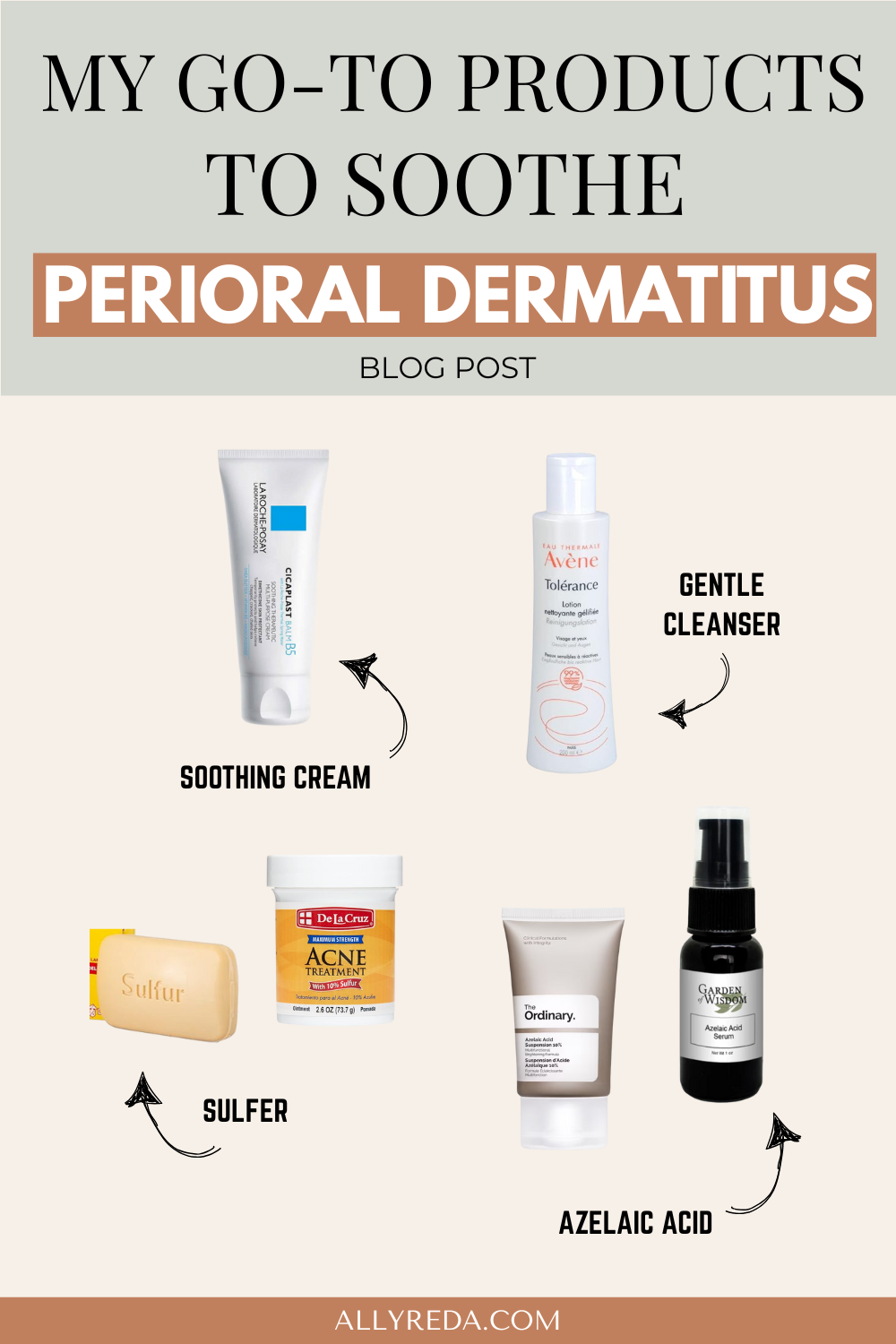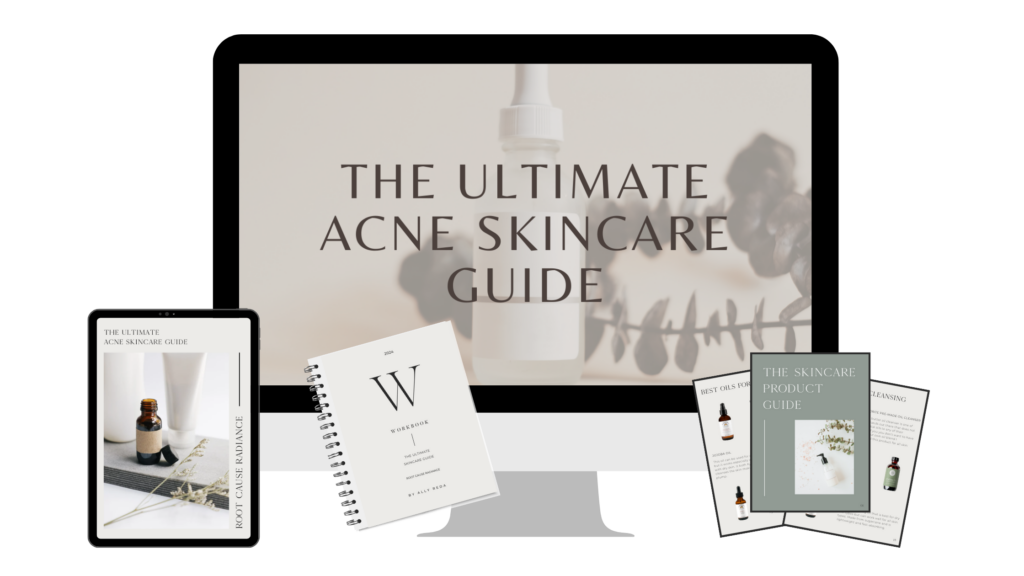The Blog
Simple Remedies That Help Soothe Perioral Dermatitis Fast

If your skin suddenly broke out in a red, bumpy, itchy mess around your mouth, nose, or eyes—you’re not alone. That’s perioral dermatitis.
You might’ve thought it was acne. Or a rash. Or some weird reaction to that new “clean” skincare line. But this stubborn flare-up has a mind of its own. And treating it like regular breakouts? Yeah… that usually makes it worse.
Let’s talk about what actually helps heal perioral dermatitis naturally, without ruining your skin barrier in the process.
First, What Is Perioral Dermatitis?
Perioral dermatitis is basically your skin saying “help!” It’s a form of inflammatory rash, typically around the mouth, nose, and sometimes eyes. It can show up as:
- Red bumps or papules
- Dry, flaky patches
- Burning or tightness
- Skin that’s mad at everything, even your once-trusted moisturizer
It’s often triggered by:
- Overuse of steroid creams (even over-the-counter hydrocortisone)
- Fluoride toothpaste
- Harsh skincare or too many actives
- Hormonal shifts or stress
- Over-cleansing or exfoliating
Basically, it’s skin barrier drama at its finest.
Want to Heal Perioral Dermatitis Naturally?
The Ultimate Acne Skincare Guide is your go-to resource for building a skin-loving routine that actually supports healing, without harsh products, endless trial and error, or making things worse.
If you’re ready to stop guessing and finally feel confident in your skincare, this guide is your first step. Let’s get that calm, clear glow—naturally.

Common Triggers for Perioral Dermatitis (That Might Be Hiding in Your Routine):
- Topical steroid creams – Prolonged use is the #1 cause of PD. Even OTC hydrocortisone can wreak havoc if used long-term.
- Nasal sprays with corticosteroids – These can drip onto the skin and quietly trigger flare-ups.
- Heavy face creams & occlusive products – Especially in hot or humid climates, thick products (like rich moisturizers, foundations, or sunscreens) can trap heat and moisture, irritating sensitive skin.
- Irritating ingredients – Fragrance, essential oils, or comedogenic oils (looking at you, coconut oil) are common culprits.
- Strong actives – Retinoids, chemical exfoliants, or high-strength vitamin C serums can overwhelm already reactive skin.
- Flavored lip balms & glosses – These can migrate to the area around your mouth and trigger irritation.
- Fluoridated toothpaste or mouthwash – Yep, even what’s in your mouth can affect your skin. Fluoride is a sneaky trigger for many.
- Fluoride in drinking water – If your skin is sensitive to fluoride, it’s worth checking your local water source.
- Menthol & other irritants in oral care products – That “minty fresh” feeling may not be so fresh for your skin.
- Harsh surfactants like SLS or SLES – Found in cleansers, scrubs, wipes, and even toothpaste. These can strip your skin barrier and worsen inflammation.
- Oral antibiotics – While sometimes prescribed for PD, they can disrupt your gut and skin microbiome, often making things worse long-term.
- Birth control pills – These can deplete key nutrients, mess with gut health, and throw off your body’s natural hormone rhythm, often showing up on your skin.
Natural Remedies That Actually Help Perioral Dermatitis
PD is tricky—it shows up fast, sticks around forever, and gets irritated by what feels like everything. If you’re overwhelmed and don’t know where to start, these foundational steps can help calm the chaos and support real healing (without turning your routine upside down).
1. Simplify. Like, Really Simplify.
When your skin is flaring, less is so much more. For at least 2–3 weeks (or until your PD fully calms), pare back your skincare routine to the absolute basics.
✨ Think:
- A super gentle cleanser at night
- A calming toner or herbal mist in the morning
- A light, fragrance-free moisturizer if needed
The goal? Remove as many potential irritants as possible so your skin can do what it does best—heal. Look for formulas with barrier-supporting ingredients like ceramides or niacinamide. Some of our community faves include Avene Cicalfate and lightweight, non-comedogenic creams with minimal ingredients like La Roche-Posay Cicaplast Balm B5.
2. Eat for Skin Barrier Repair
Clear skin starts from the inside, especially when it comes to rebuilding a damaged skin barrier. Focus on:
- Bioavailable animal protein (think eggs, grass-fed beef, wild-caught salmon)
- Healthy fats like avocados, ghee, coconut oil, and fatty fish
These nourish your skin cells from within and help you rebuild a resilient barrier.
At the same time, try to cut back on:
- Refined sugar
- Vegetable oils
- Alcohol
- Packaged, processed foods
Choose whole foods with no ingredient list, and your skin will thank you.
Bonus: One of my clients healed her PD within weeks by upping her protein + fats and cutting out irritating skincare. Your skin wants to thrive—it just needs the right tools.
3. Add Probiotic-Rich Foods (Cautiously)
Your gut and skin are BFFs. When your gut’s out of balance, your skin often shows it. Adding natural probiotics—like sauerkraut, kimchi, or organic yogurt—can help rebalance your microbiome.
But a heads-up: Some probiotic strains produce histamine, which can trigger flares for certain people. If you notice itchiness or inflammation, scale back and try lower-histamine options.
4. Keep a Food + Flare Diary
Even if your digestion feels “fine,” hidden food sensitivities might be stirring the pot. Track what you eat and when flares happen—it might surprise you.
You can also try an elimination diet (temporarily) to spot patterns and support hormone balance along the way.
5. Gentle Natural Remedies (That Don’t Make It Worse)
These remedies are meant to support, not stress, your skin. Always patch test first (twice!) before going all-in.
- Aloe Vera – Hydrating + healing. Try organic bottled gel or fresh from the plant (if your skin tolerates it).
- Organic Plain Yogurt – Naturally probiotic and gently exfoliating. Apply as a short mask, and rinse with lukewarm water.
- Green Tea or Chamomile Toner – Both are calming, antioxidant-rich, and great as gentle DIY toners. (Chamomile is especially soothing for dry or reactive skin.)
- You can DIY these toners by following these steps:
- Steep 1 tablespoon of loose leaves (or 2 tea bags) in ¼ cup of hot water for 4-5 min
- Strain, then let cool and place in a glass bottle
- Store in the fridge for up to a week, then make a new batch
- You can DIY these toners by following these steps:
My Favorite Products for Perioral Dermatitis (Tried-and-True Faves)
These are the ones I reach for when my skin starts to freak out—or to gently support it when things are starting to calm down. But always remember: if it makes things worse, stop and go back to basics!
1. La Roche-Posay Cicaplast Baume
Use this when you’re in a full-blown flare. It’s rich, calming, and helps repair your skin barrier without clogging pores. Once the redness goes down, switch back to a super gentle moisturizer.
2. Azelaic Acid (The Ordinary or Garden of Wisdom)
Azelaic acid is amazing for calming inflammation and fading post-flare marks.
- The Ordinary version is a bit stronger
- Garden of Wisdom is more gentle and soothing
Start slow—just a few times a week—after your skin is calm, not during a big flare.
3. Sulfur Soap or Acne Treatment
Sulfur has antimicrobial properties and helps balance skin without over-drying. Great as a spot treatment or occasional cleanse—but not daily unless your skin loves it.
Reminder: Less Is More
If any of these products start to sting, burn, or make things worse, pause. Your skin’s not rejecting you; it’s just overwhelmed. Strip back to a basic routine until it’s ready again.
Final Thoughts: Your Skin Can—and Will—Heal
Perioral dermatitis is stubborn, but it’s not forever. The goal isn’t to find the magic product—it’s to rebuild trust with your skin and support your whole body in the process.
So, if you’re sitting there wondering, “why is this happening to me?”—you’re not alone. And no, your skin isn’t broken. It’s asking you to slow down, strip back, and tune in.
And if you want more skin-soothing tips, root cause remedies, and natural healing advice, check out Root Cause Radiance—my self-paced course designed to help you go from confused and inflamed to confident and clear (without fear-based band-aid fixes).
You deserve to feel good in your skin. Let’s get you there—one calm step at a time.
Rooting for you,
Ally
Be the first to comment